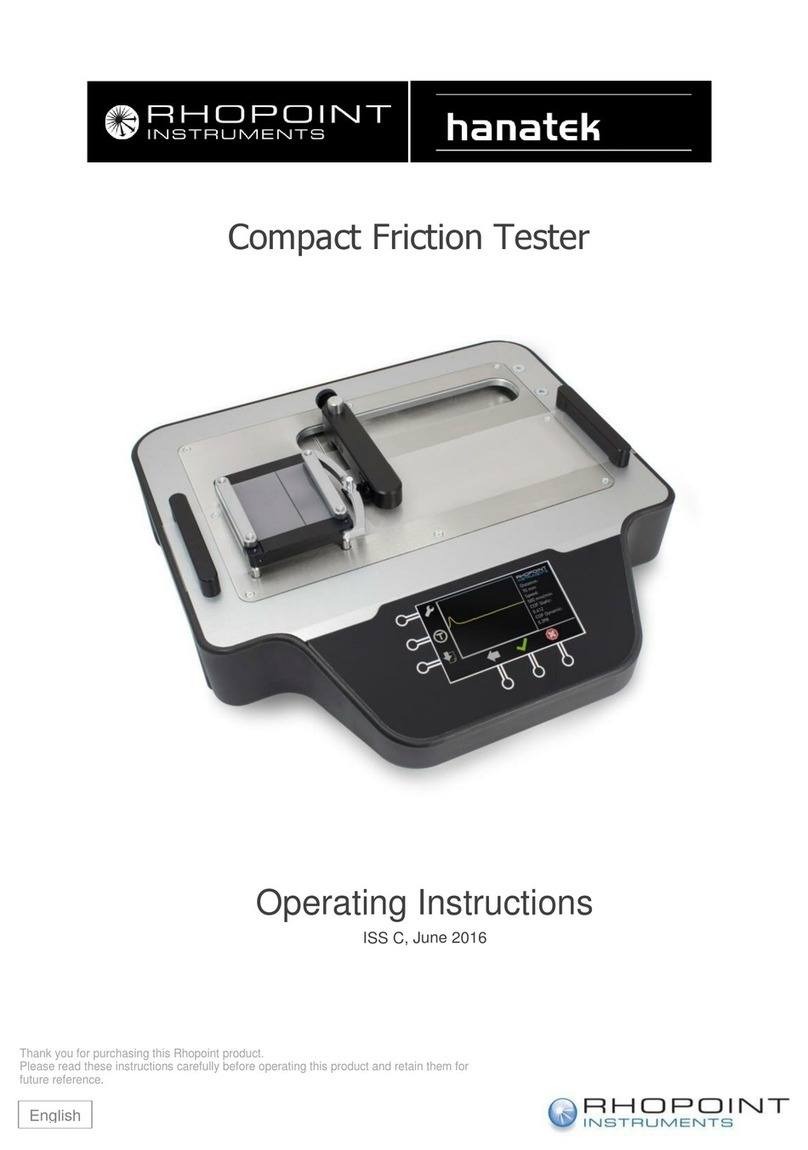
6
Rhopoint Universal Friction Tester
Flat Bed Friction Testing
To measure Static and Dynamic coefficients of friction it is necessary to use a fixed bed instrument. These
instruments use a motor to pull a sled across the sample, using a load cell to measure the forces. Original
slip testing instruments were converted tensile testers that used a cord to pull the sample. The use of a cord
has now been removed from most friction measurement standards due to the uncertainty added by its own
elasticity and problems with sample positioning. The UFT from Rhopoint uses mechanical linkages to apply
the force and uses automatic sled placement for very accurate sample positioning with variable dwell time
setting before testing.
How can Coefficient of Friction (COF) Values relate to packaging speeds?
COF can often be related to the feeding and running attributes of products, for example food cartons have a
slip coefficient that is related to the type of varnish applied, how well it has been cured and how thickly it has
been applied. Cartons that have a very low static coefficient of friction may have handling difficulties asthey
will tend to slide apart and are difficult to place into feeding hoppers. In contrast products which have a high
coefficient of friction will tend to stick together and are prone to misfeeding due to multiple cartons entering
the packaging line. Different packaging lines will often require products with specific surface frictional profiles
to achieve their highest running and feeding speeds, it is only by measuring and specifying these values that
a manufacturer can achieve maximum productivity.
What parameters affect Coefficient of Friction (COF)Values?
COF is primarily influenced by the chemical composition of the surface and its physical profile. In packaging
the surface chemistry is often elated to coatings applied to a carton or the additives in a plastics film. In
the paper and board making industries the friction characteristics are related to the physical profile of the
sample-paper fibres, coating composition and smoothness etc.
How can detailed Frictional Force measurement help improve Productivity?
In addition to simple static and dynamic COF values the UFT-LAB produces detailed force curves which
detail the surface characteristics across the test area. These force curves identify any inconsistencies on the
sample surface that may reduce packing or feeding performance in the production environment. The unique
strength of the UFT-LAB is that profiles can be overlayed for comparison, allowing identification of substrate
or coating changes that can cause problems with product runnability. This powerful feature can highlight
subtle differences in substrates or coatings that allow the user to fine tune their product for their production
conditions giving optimum feeding, running and packing speeds.




























